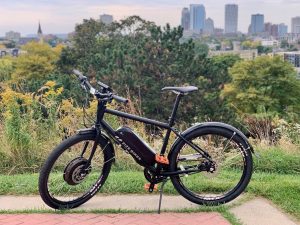Bicycle helmet safety measures should be observed by anyone, even pro cyclists. But even though this is basic, there are still some who do not know how to wear it properly. So, check out these following guidelines about bicycle helmet safety.
How to Choose a Bicycle Helmet
Helmets today are more comfortable and a lot easier to adjust than before. There are a lot of less expensive types of bicycle helmets for riders of all ages. You just have to remember the following guidelines in choosing a bike helmet.
- Look for an approval seal from certain organizations like the American National Standards Institute (ANSI), Consumer Product Safety Commission (CPSC), or Snell Memorial Foundation.
- See to it that it fits snugly. You should not be able to move it more than 1 inch in all directions — side to side or back and front. The sizing pads included with each helmet help in making the fit a lot more secure. If you have long hair, get one with a ponytail port.
- Pay attention to visibility. If the straps block your vision (even just a bit), try another one. Also, make sure other bicyclists and drivers can see you. Get a white or a bright-colored helmet. You can also get a helmet that comes with lights.
How to Wear a Bicycle Helmet Properly
The rules for wearing a bicycle helmet are the same with adults and kids:
- Wear it flat on top of your head.
- Be sure that it covers the top of your forehead even if you don’t tilt it backward or forward.
- Make sure the straps are in a V-shape under each of your ears.
- Fasten the chin strap immediately below your chin, and not along your jaw or on the side of your chin.
- If the bicycle helmet moves from front to back or from side to side, use the sizing pads to get a better fit.
- The distance between your eyebrows and your helmet must be two fingers.
- You should be able to fit one finger under your chin when checking the fit of the strap.
Bicycle Helmet Safety: Common Mistakes You Should Avoid
Know that if the helmet is titled forward, the back of your head is more susceptible to impact during a crash. Tighten your chin strap to keep the bicycle helmet flat on your head. If it still goes forward, you might need a smaller one.
On the other hand, a bicycle helmet that tips backward can also be an issue. With this kind of fit, the side and front of your head become vulnerable to impact. Again, the solution to this is to tighten the chin strap. If it still tips backward, you might have to look for a smaller bicycle helmet.
If you are looking for extra sturdy bicycles specially built for every body, including riders up to 550 pounds, visit the website of Zize Bikes.
Here is a video that shows how to fit a bicycle helmet properly.







